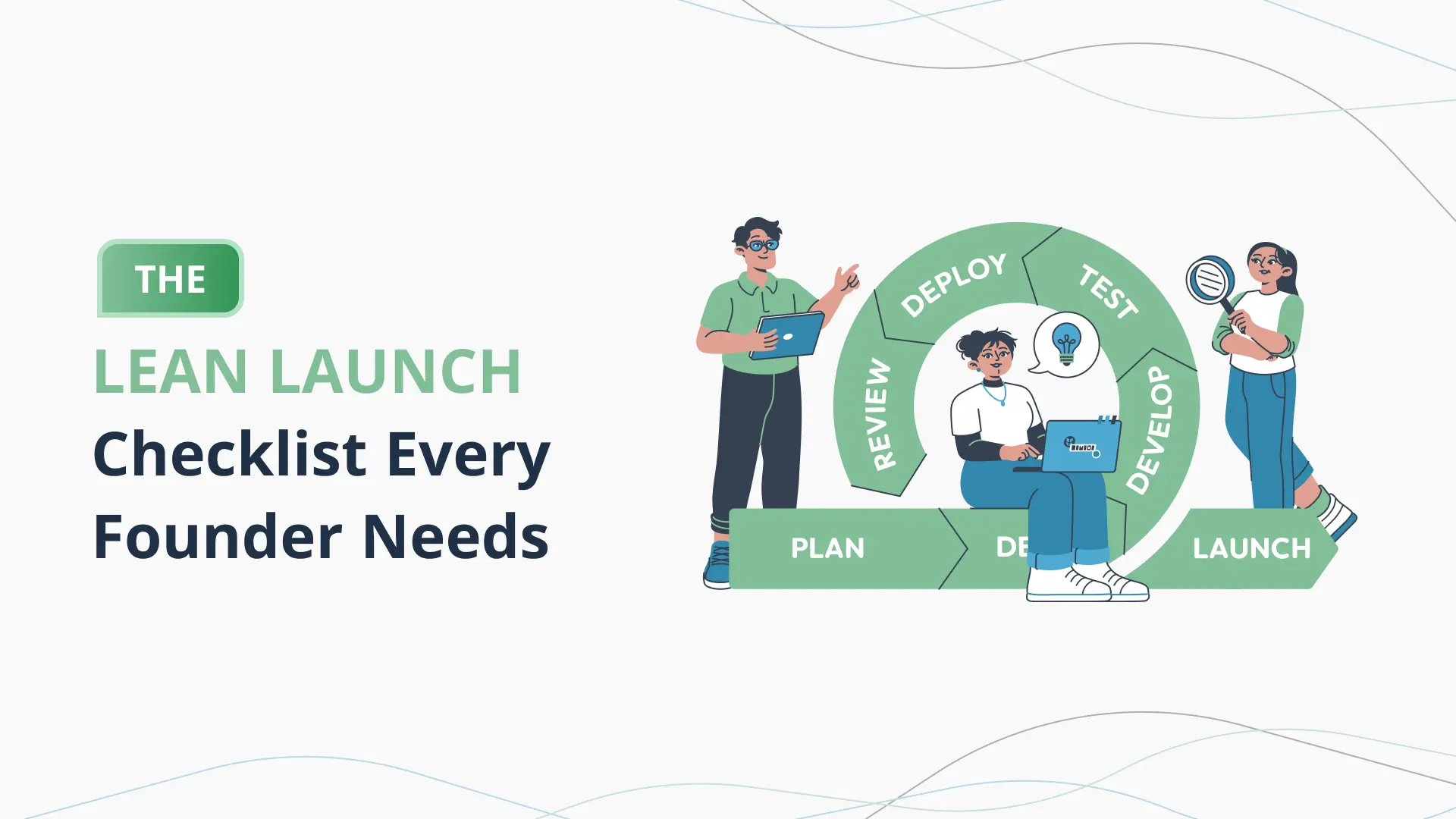Finding Your Niche in an Oversaturated Market

Introduction: Thriving Where Others Struggle
In today’s hypercompetitive business landscape, standing out can feel like shouting into a hurricane. Every corner of the market is teeming with startups, solopreneurs, and legacy companies all vying for attention. From health and wellness to tech solutions and handmade crafts, countless players are saturating almost every imaginable industry. For aspiring entrepreneurs and startup founders, the daunting question looms: “How can I carve out a space that’s truly mine?”
Welcome to the age of oversaturation — a reality where barriers to entry are lower than ever, thanks to digital tools, accessible marketing platforms, and a surge in entrepreneurial spirit. While that democratization is empowering, it also means that simply launching a business isn’t enough. Without a clear, well-defined niche, even the most promising ventures risk fading into obscurity.
But here’s the good news: even in the most crowded markets, there are untapped pockets of opportunity. Success doesn’t always go to the biggest or the fastest — it goes to those who understand their unique value and can communicate it with laser precision. Finding your niche is less about inventing something new and more about discovering a specific need that isn’t being adequately met — and then meeting it better than anyone else.
Think of it like this: instead of trying to win a marathon with thousands of runners, imagine stepping onto a trail where few have dared to go. The niche strategy doesn’t just allow for differentiation; it gives your brand a reason to exist. It lets you speak directly to your ideal audience, serve them more meaningfully, and build lasting loyalty in a way that broad-market competitors can’t replicate.
The key challenge, however, lies in the process. How do you identify that elusive niche when everything seems already taken? How do you ensure it’s viable, scalable, and aligned with your strengths? And once you’ve pinpointed it, how do you use it to fuel your business strategy — from product development to branding and marketing?
In this blog, we’ll walk you through a comprehensive journey: from understanding market saturation and learning from real-world examples, to uncovering practical steps for niche discovery. We’ll explore common challenges and how to overcome them, and we’ll highlight how AI-powered tools like the PlanVista app, a top-tier business plan generator and startup planning tool, can empower you to validate and build your niche business with confidence.
Whether you’re a seasoned founder pivoting in a changing market or a new entrepreneur taking your first steps, this guide will equip you with the insights, tools, and mindset needed to thrive — not in spite of the crowded marketplace, but because of your unique approach within it.
Let’s dive in and discover how the right niche can transform your business from overlooked to unforgettable.
Understanding Market Saturation and Why It’s Not Always a Bad Thing
The term market saturation often triggers anxiety in entrepreneurs. It conjures images of a crowded marketplace where every need is already being met, every customer already spoken for, and every idea seemingly executed by someone else. But what if we flipped the narrative? What if saturation could be a signal — not of exhaustion, but of opportunity?
At its core, market saturation means that a product or service has reached its maximum potential demand in a given market. On the surface, this sounds discouraging. But dig a little deeper, and you’ll find that saturation often means there is demand. It indicates a proven interest, a functioning ecosystem, and customers who are already spending money in the category. The trick isn’t to avoid saturated markets — it’s to enter them differently.
Take the coffee industry, for example. It’s arguably one of the most saturated markets in the world. Yet new coffee brands, cafes, and subscription services continue to emerge — and succeed — by focusing on micro-niches. Some differentiate through sustainability, others through origin-specific beans or unique brewing methods. Blue Bottle Coffee, for instance, gained a foothold not by being just another coffee shop, but by promising obsessively sourced, small-batch coffee for purists. They found their audience within an already crowded space.
This phenomenon isn’t limited to consumer goods. In the digital space, consider the project management software market. With giants like Asana, Trello, and Monday.com dominating the field, you’d think it’s a lost cause to launch another tool. Yet Notion carved out a niche by blending note-taking and task management with a highly customizable interface, attracting creatives and startups who found the mainstream tools too rigid.
These examples highlight a key insight: Saturation doesn’t mean you can’t compete — it means you can’t compete on sameness. You have to bring a distinct voice, solution, or experience to the table. That’s where niche discovery becomes powerful.
Another factor to consider is how consumer behavior evolves. What worked five years ago might not be meeting today’s needs. Saturated markets are often filled with legacy providers that are slow to adapt. This creates room for agile startups that can target underserved or emerging segments — demographics, use cases, or values that others overlook.
Of course, this approach requires research, clarity, and strategic thinking. That’s where AI-powered platforms like the PlanVista app become invaluable. By using a smart AI business plan tool, you can quickly analyze market data, test your niche ideas, and create a business plan tailored to a specific segment — all without spending weeks on trial and error.
Identifying Gaps: How to Discover a Viable Niche in Any Market
Finding a niche in an oversaturated market starts with mastering the art of observation. It’s not about reinventing the wheel — it’s about noticing what’s missing in a world full of offerings. Customers are constantly communicating their unmet needs through reviews, forums, feedback, and even complaints. The most successful niche businesses are those that listen, analyze, and act on this information with precision.
Start with Customer Pain Points
One of the most effective ways to identify a niche is by targeting specific pain points that broader solutions overlook. Let’s say you’re eyeing the fitness industry — a notoriously saturated space. Instead of launching another generic workout app, you might focus on a very particular demographic: postpartum mothers, people with physical disabilities, or busy professionals who can only train in short bursts. Each of these groups has unique needs that aren’t fully met by mainstream platforms.
Explore Your Own Experiences and Interests
Sometimes, your personal frustrations can lead to your most profitable niche. What problems do you encounter regularly that no one seems to solve well? Maybe you’re a freelancer who struggles with managing contracts and invoices — and you realize that existing tools are clunky for solopreneurs. That insight could spark a hyper-targeted business idea. Passion-based niches also tend to thrive because authenticity resonates with niche audiences.
Dig Into Online Communities
Reddit, Quora, Facebook groups, and niche forums are goldmines for discovering what people really care about. Look for recurring questions or frequent “Does anyone know a good…” posts. These signals often reveal needs that the mainstream market hasn’t fully addressed. Let’s say you find dozens of dog owners in a cold climate complaining about their pets’ discomfort during winter walks. That might lead to a niche pet apparel line designed for extreme weather.
Analyze Competitor Weaknesses
A crowded market means there’s plenty of competition — but also plenty to learn. Study reviews of top products or services in your target industry. Look for patterns in negative feedback. Are customers complaining about customer service, confusing interfaces, slow delivery, or lack of customization? Each complaint is a potential opportunity. You don’t need to serve everyone better — just someone better.
Validate the Market with AI Tools
Before you invest significant time or money, validate your niche idea using data. This is where the PlanVista app comes in. As a powerful AI business plan tool, it allows you to simulate different business models, analyze target demographics, and understand the demand landscape using real-time insights. You can plug in various niche hypotheses and quickly see which ones show promise — saving you weeks of manual research.
Don’t Just Follow Trends — Anticipate Them
Trendy niches come and go, but lasting success comes from identifying enduring shifts in consumer behavior. Think about larger movements: sustainability, mental health, remote work. How can you align your niche with these growing values? For example, a niche skincare brand that focuses on eco-friendly, plastic-free packaging is tapping into both a product market and a value-driven trend.
From Niche to Strategy: Building a Business Around Your Unique Offering
Once you’ve identified a promising niche, the real work begins — translating that insight into a viable business model. A niche is more than a marketing angle; it’s the core of your brand, your product design, your customer experience, and even your pricing. It becomes the lens through which every business decision is made. And the more aligned your strategy is with your niche, the more effective and memorable your brand becomes.
Start with a Clear Value Proposition
The first step is to distill your niche into a clear, compelling value proposition. What exactly are you offering, and why should your specific target audience care? This isn’t about shouting louder — it’s about being sharper. If your niche is sustainable fashion for tall women, your value proposition isn’t just about stylish clothes; it’s about inclusivity, fit, and conscious consumerism for an underserved demographic. This clarity guides everything else — your branding, your messaging, your product roadmap.
Tailor Your Business Model
Your niche should directly inform your business model. For instance, if you’re targeting digital nomads with minimalist tech gear, you may opt for a direct-to-consumer eCommerce model with global shipping. On the other hand, a B2B niche like software for boutique law firms may require a SaaS subscription model with onboarding support and ongoing customer success services. Understanding your audience’s buying habits and preferences is key to selecting a model that aligns with their expectations.
Customize Your Product or Service
Generic offerings won’t resonate with a niche market. This is where personalization becomes powerful. Use your niche insight to add features, experiences, or support that larger companies can’t offer. A meal delivery service for diabetics, for example, could differentiate with nutritionist consultations or detailed carb tracking. It’s not about doing more — it’s about doing what matters most to your specific audience.
Develop a Focused Marketing Strategy
Marketing a niche business requires precision. Instead of casting a wide net, you’ll want to use a sniper approach. Identify where your niche audience spends time online, what language resonates with them, and what pain points drive their behavior. Your content, ads, and SEO should all reflect your niche’s unique world. Email campaigns, webinars, podcasts, or partnerships with niche influencers can amplify your message in targeted spaces.
Plan Strategically with Smart Tools
Here’s where the PlanVista app becomes a game-changer. This startup planning tool doesn’t just help you write a business plan — it helps you build a business around your niche. By leveraging AI, PlanVista guides you through everything from defining your ideal customer profile to forecasting niche-specific growth scenarios. It aligns your strategy with data-backed insights, helping you stay focused and reduce guesswork.
Common Pitfalls When Choosing a Niche (And How to Avoid Them)
Finding a niche can unlock serious business potential — but it’s not without its traps. Many entrepreneurs dive into niche markets with enthusiasm, only to find themselves stuck, scaling too slowly, or worse, appealing to no one at all. That’s why understanding the common pitfalls — and knowing how to sidestep them — is essential for building a sustainable business around your niche.
Pitfall 1: Going Too Narrow
While specificity is the power behind a niche, going too narrow can make your business unsustainable. If your target audience is too small or your product too specialized, you risk limiting your revenue potential. For example, a coaching service exclusively for left-handed UX designers over 50 might be too small a segment to support long-term growth.
How to Avoid It: Use data to validate your market size before committing. The PlanVista app can help here — as a smart AI business plan tool, it evaluates whether your niche idea is viable based on real-world market data. If the niche seems too thin, look for ways to broaden it slightly without losing your unique angle.
Pitfall 2: Choosing a Niche You Don’t Understand
Some entrepreneurs chase trends or underserved segments that they have no personal experience with. While it’s possible to succeed in unfamiliar territory, it often leads to misaligned messaging, product misfires, and lack of genuine connection with your audience.
How to Avoid It: Ideally, choose a niche you relate to or are deeply curious about. This gives you an instinctive understanding of your audience’s needs and motivations. If that’s not possible, spend serious time immersing yourself in the community — read forums, conduct interviews, gather qualitative insights.
Pitfall 3: Ignoring the Competition
Many believe a niche must be completely untapped. But in reality, a little competition is a good thing — it shows demand. Some entrepreneurs avoid entering a niche because someone else is already serving that audience. This leads to wasted time searching for the elusive “perfect,” competitor-free market.
How to Avoid It: Don’t fear competition; instead, differentiate. Study your competitors closely and identify gaps in their offering. Your niche strategy should focus on what they aren’t doing well. The PlanVista app helps you map this out, enabling you to create a business plan that emphasizes your unique value.
Pitfall 4: Lacking a Long-Term Vision
It’s easy to focus on the immediate opportunity without thinking about how your niche can evolve. This short-sightedness can stunt growth when you hit a plateau. A niche that’s too trend-dependent might also burn out quickly.
How to Avoid It: Always ask: “Where can this niche go in three years?” Choose a niche with layers — one that can branch into adjacent offerings, markets, or audiences as your business matures. This mindset helps you plan for sustainability, not just launch.
Pitfall 5: Overcomplicating the Offering
Sometimes, in the name of differentiation, founders pack their niche product or service with too many features or complexities. This can confuse your audience and dilute your core value.
How to Avoid It: Stay focused. Build around a simple, powerful promise that speaks directly to your niche audience’s top need. Let feedback guide your evolution.
Avoiding these common missteps — with the help of strategic planning tools like PlanVista — puts you on solid footing to build a niche business that’s smart, scalable, and sustainable.
Real-World Examples of Niche Success in Crowded Industries
The best way to understand the power of niche businesses is to study the ones that have already made their mark — not by going broad, but by going deep. These real-world success stories illustrate how entrepreneurs have carved out space for themselves in markets that were seemingly “too full,” proving that with focus, authenticity, and smart strategy, it’s possible to win big in a crowded field.
1. Glossier – From Beauty Blog to Beauty Brand
The beauty industry is one of the most saturated in the world, with legacy brands like L’Oréal, MAC, and Estée Lauder dominating retail shelves for decades. When Glossier entered the scene, it didn’t try to compete head-on with these giants. Instead, it focused on a niche: millennial women who valued minimalism, transparency, and skincare-first beauty routines.
Founded by Emily Weiss, who started with a blog called “Into the Gloss,” Glossier built a community before launching products. Its focus on real user feedback, inclusive marketing, and “skin first, makeup second” messaging helped it gain massive traction in an already overpopulated industry. Glossier is a textbook example of how brand authenticity and community engagement can turn a niche into a global phenomenon.
2. Beardbrand – Owning the Bearded Man’s Identity
Beardbrand was launched with one mission: to make men with beards feel confident, groomed, and respected. Rather than being just another men’s grooming company, they positioned themselves as the lifestyle brand for bearded men — a growing niche that wasn’t being served by traditional grooming products.
In an era where masculinity was being redefined, Beardbrand captured a specific subculture that was underserved. Through content marketing, storytelling, and tailored product lines, they turned a niche community into a loyal customer base. Beardbrand didn’t need to win over every man — just the ones who resonated with their message.
3. Notion – A Tool for the Productivity-Obsessed Creatives
The productivity tools space was already filled with established players like Trello, Evernote, and Asana. Notion didn’t try to be a better Trello; it positioned itself for people who wanted total flexibility. Its highly customizable interface appealed to knowledge workers, creatives, and startup founders who wanted one space for everything — notes, tasks, wikis, and more.
By targeting this niche — and giving them the power to shape the tool to their workflow — Notion built a cult following. It became the go-to for creators, coders, and consultants who felt boxed in by rigid platforms.
Conclusion: Standing Out by Going Deep
In a world where seemingly every market is bursting at the seams, the instinct might be to shout louder, grow faster, or try to appeal to everyone. But as we’ve explored, true success in an oversaturated market doesn’t come from being everything to everyone — it comes from being essential to someone. That’s the power of a niche.
Whether you’re an aspiring founder, a solo entrepreneur, or a small team ready to make an impact, finding your niche means identifying a group of people with a specific problem, and solving it better than anyone else. It’s about depth, not breadth. It’s about clarity over complexity. And most importantly, it’s about connecting with real people in real ways.
From understanding how market saturation signals opportunity, to discovering pain points, crafting a focused strategy, avoiding common pitfalls, and studying successful case studies — the roadmap to niche success is clearer than ever. But clarity alone isn’t enough. Execution is what transforms a promising idea into a thriving business.
That’s where the PlanVista app comes in. More than just a business plan generator, PlanVista is a smart, AI-driven platform built to help modern entrepreneurs turn niche insights into real, scalable strategies. With its powerful combination of market research, customer profiling, plan creation, and scenario testing, PlanVista acts as your digital co-founder — guiding you every step of the way from concept to launch and beyond.
Why waste months second-guessing your niche or blindly navigating saturated waters when you can use PlanVista to move forward with confidence? Whether you’re building a meal delivery service for keto vegans, a SaaS tool for wedding planners, or a fashion brand for tall teens, PlanVista gives you the edge you need to win — by helping you stand out exactly where it matters.
Finding your niche isn’t just a strategic choice. In today’s noisy world, it’s a survival tactic. And for those who get it right, it becomes more than a market segment — it becomes a brand identity, a loyal community, and a powerful growth engine.
So if you’re ready to stop guessing and start building, try the PlanVista app today. Discover your niche, design your strategy, and dominate your corner of the market — no matter how crowded it seems.
Because in the end, the businesses that thrive aren’t always the biggest — they’re the ones that know exactly who they’re for.
FAQs
A niche refers to a specific, targeted segment of a larger market. It’s crucial because it allows you to differentiate and connect deeply with a defined audience, making your business more memorable and competitive.
If your niche audience is too small to generate sustainable revenue or growth, it may be too narrow. Tools like PlanVista can help you validate market size and potential.
Absolutely. Many successful brands start with a niche and then expand into adjacent markets as they grow, using their initial focus as a strong foundation.
The main risk is being overlooked if you don’t differentiate. However, with a clear niche and strategy, saturation can actually signal high demand and opportunity.
PlanVista uses AI to analyze market data, build customer personas, generate business plans, and test strategies — all tailored to your chosen niche, helping you move faster and smarter.










